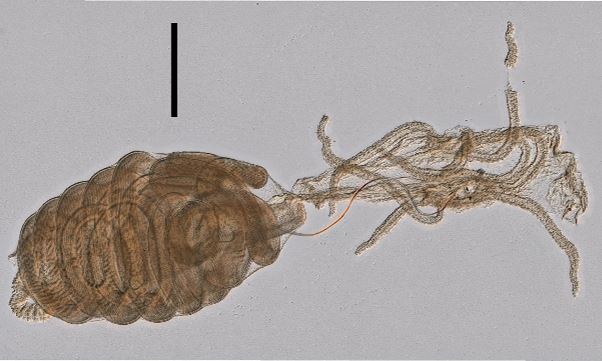The Lychnagalma utricularia’s pneumatophore is small and ovate, featuring red-brown pigment in an octoradial pattern at the apex. It contains eight radial septa and an annular septum. The broader distal end of the pneumatophore carries 2 or 3 short, pointed teeth. In a frontal view, the nectophore has a squarish to rectangular appearance. The nectosac also appears squarish, with lateral pouches and a neck near the ostium. The siphosome is longer and contains inconspicuous cormidia. The gastrozooids have exceptionally long stalks and bear a unique tentacle at their base. The base of the ampulla is surrounded by eight slender, motile, upright long filaments. The male gonophores measure 0.7-0.8 mm in length and have a distinct umbrella shape, while the female gonophores are relatively larger. The bracts are flat, scale-like, ovate or triangular, with a convex dorsal side and a concave ventral side. They are attached to the stem through small peg-like pedicels.
